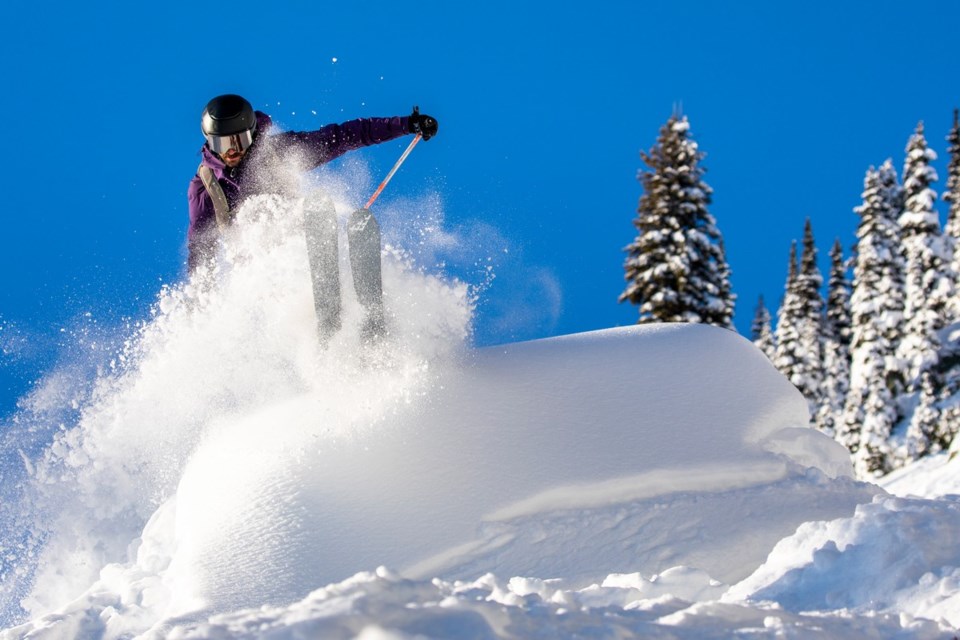Contending with poor weather, the growing impact of COVID-19, and lower-than-expected visitation to Whistler Blackcomb (WB), Vail Resorts posted mixed results in its most recent quarterly report.
For the second fiscal quarter ending Jan. 31, the Broomfield, Colo. company saw its total net revenue increase by 8.8 per cent to US$924.6 million compared to the same period last year, while its net income stayed flat, at $206.4 million, compared to $206.3 million last year.
Total lift revenue rose 8.2 per cent to $36.8 million, driven by an 8.8-per-cent growth in skier visitation over the quarter. This comes despite what the company said was the lowest snowfall in more than 30 years at WB and Stevens Pass in Washington, which led to “very poor results through the early season and critical holiday period,” according to Rob Katz, Vail Resorts CEO, speaking during a conference call announcing the quarterly results.
“Overall we feel good about the season so far, but have had both areas of challenge and areas of strong performance,” Katz said, noting that WB experienced “a weaker than expected recovery in North American and international destination visitation.”
Overall, visitation to the company’s Pacific Northwest resorts was down 14 per cent compared to the same period in 2019.
Vail Resorts has also decided not to issue its outlook for fiscal 2020, withdrawing its previous guidance from January, due to the continued uncertainty around coronavirus and its impact on financial results for the remainder of the year.
In the week ended March 8, Katz noted “a marked negative change in performance from the prior week, with destination skier visits modestly below expectations,” a trend the company expects to continue and potentially worsen in the coming weeks.
Excluding any identified impact from COVID-19, the company had estimated its EBITDA (Earnings Before Interest, Tax, Depreciation and Amortization) for the fiscal year to be approximately $20 million below the midpoint of the guidance range previously issued on Jan. 17.
For the quarter, ski school, dining and retail/rental revenues increased by 11.4 per cent, 15.8 per cent and 4.1 per cent, respectively, which the company said was primarily driven by September’s acquisition of Peak Resorts, a network of 17 U.S. ski areas located in the Northeast, mid-Atlantic and Midwest regions.
Operating expenses for the quarter increased by $48.7 million, or 11.5 per cent, largely due to incremental expenses from Peak Resorts.
Looking at the ski season to date paints a less rosy picture, however. Total skier visits through March 1 were down 5.2 per cent, while lift ticket revenue mostly stayed flat, up 0.8 per cent compared to last year.
Season-to-date ski-school revenue rose 2.8 per cent, while dining revenue was down 1.4 per cent and retail and rental revenue dropped slightly by 0.6 per cent.
Last year, Vail Resorts launched its Epic Day Pass, which offers up to 50-per-cent off lift-ticket window prices if purchased prior to the ski season. In its quarterly report, Vail Resorts said it was “very pleased with the success of the Epic Day Pass last year and expect to see continued growth in this product in its second season.”
It has also introduced a new customizable Whistler Blackcomb Day Pass, which offers one to 10 days of access to the resort. A full 10-day pass is priced at CAD$1,071, or $108 a day. An Epic Pass for the 2020/21 season, which offers unlimited access to 37 resorts in North America and Australia, is currently priced at CAD$1,343 once the exchange rate is factored in.
To read the full report, visit investors.vailresorts.com.




